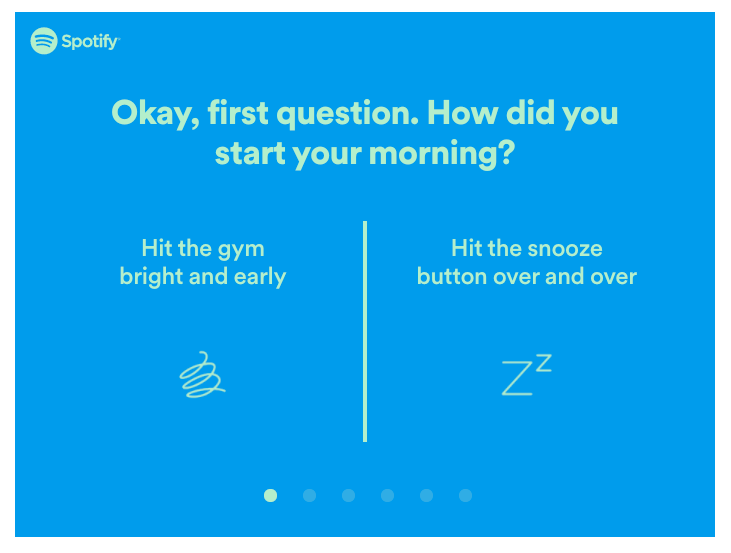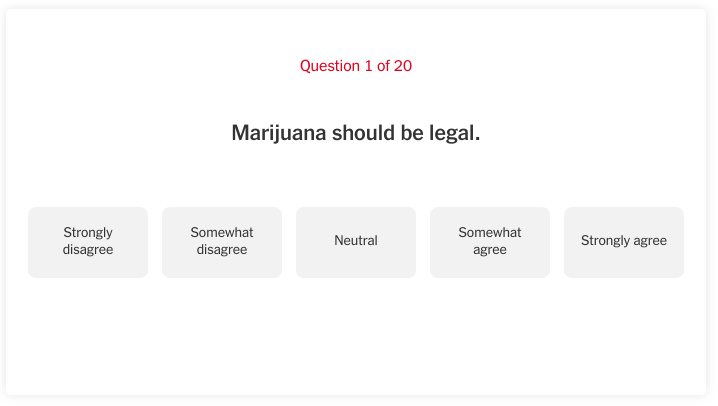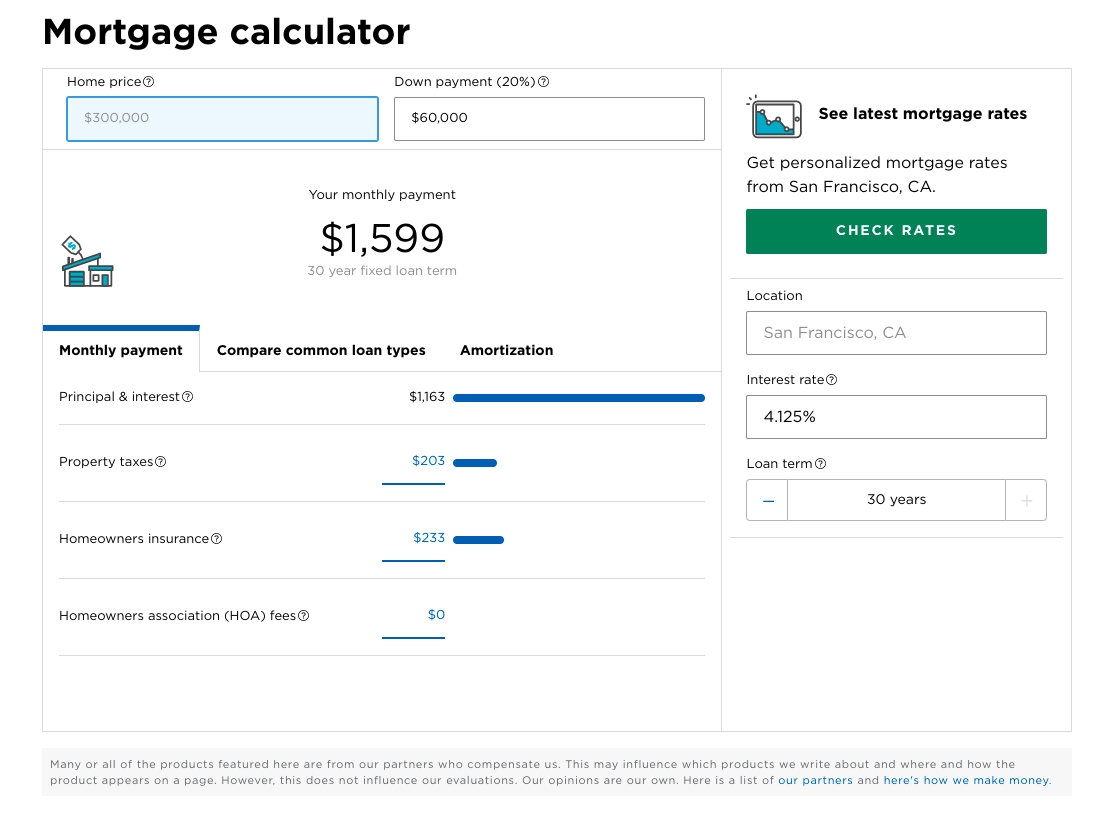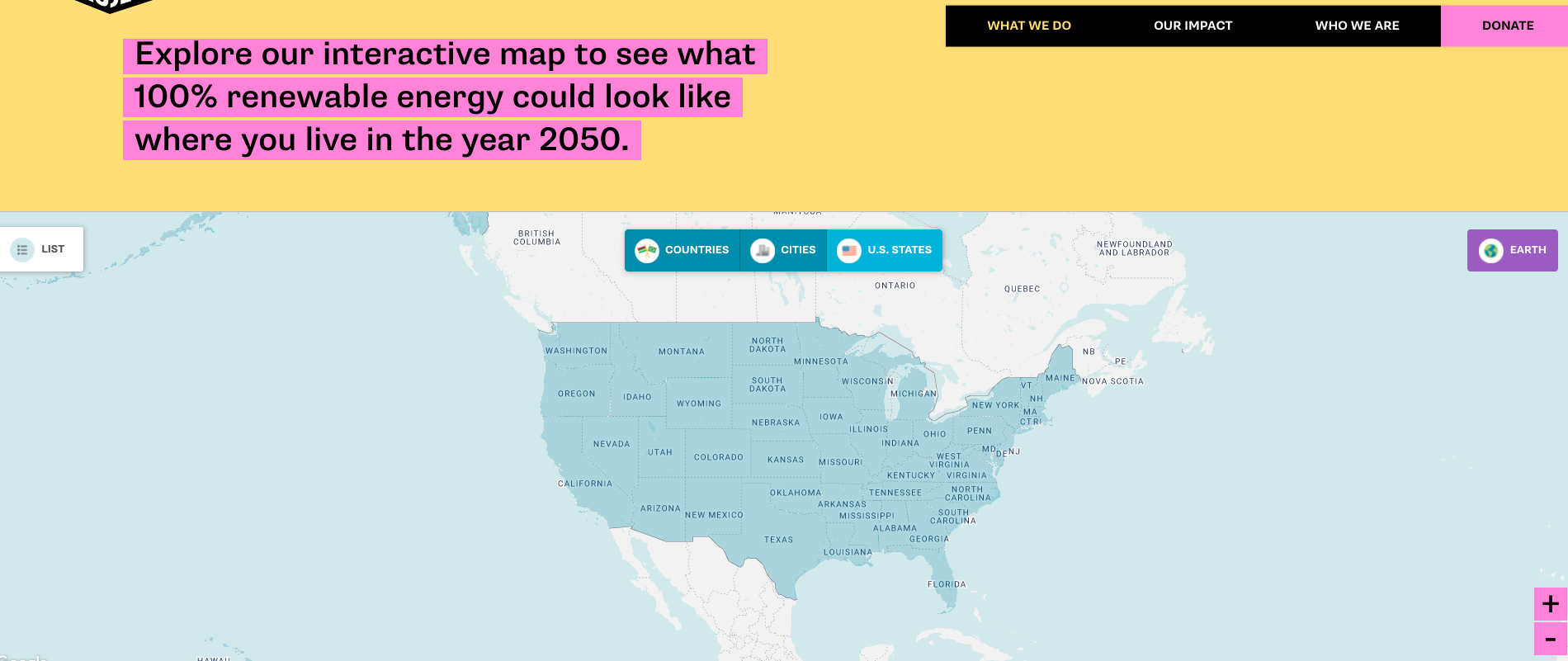One of the hardest things for a marketer to do is create content that’s engaging enough to get users to start a conversation with their sales people. After all, lead generation is really the whole point of content marketing. The simple truth is that customers have the whole world at the tap of a finger. With so much content cluttering their feeds, it really comes down to the content that’s entertaining and informative at the same time that stands out in their minds.
That’s where interactive content comes in. Whether it’s maps, quizzes or infographics, interactive marketing – sometimes referred to as game marketing, encourages users to engage directly with the piece, helping drive up engagement while boosting your brand recognition to boot.
Let’s walk through how you can deploy interactive content to transform your entire content marketing strategy.
What Is Interactive Content?
Interactive content provides users with valuable, relevant information while encouraging them to engage directly with the content itself. This form of content can range in complexity, from simple image slides to more comprehensive polls and games.
The importance of interactive content is two-fold. On the one hand, it shows off your tech savviness, which can be a major boon when trying to engage those digital natives. More than that, this content type incorporates data analytics that you can use to gather information on consumer behavior, helping you make smarter and more data-driven business decisions.
Here are some of the most popular and effective types of interactive marketing content:
- Quizzes: Quizzes are one of the simplest yet most effective and engaging ways to reach your target audience, just ask Buzzfeed. A good quiz might be a hit among users and is probably the most likely to go viral, generating millions of likes, shares and comments on social media. Done right, you can also weave the key information you want to convey to users into the quizzes themselves, making for a dynamic piece of content.
- Polls: Polls give users real-time data about an interesting or compelling topic, helping to position your organization as a thought leader in that space (or as the best equipped to solve a related problem). You can use the data you collect in your polls to build a better understanding about your customers’ needs and problems.
- Games: Everyone knows how addicting a good online game can be, so these are among the most powerful ways to drive user engagement. Games tend to be on the higher end of the interactive content budget, however, so invest in these only if you’re confident your games will drive the results you want.
- Infographics: Infographics are among the most effective (and popular) forms of content marketing in the industry today. They offer quick, bite-sized pieces of useful information that users can consume in a flash. Making these interactive can help highlight key information, elucidate particular points and add serious value.
- Maps: People are visual learners, so maps are a great way to share complicated information. Maps are good for sharing information about geographical areas, like if you’re a health care organization and want to demonstrate where the active COVID-19 hotspots are. But even a well-drawn map can get confusing. Interactive maps allow users to pinpoint and emphasize certain pieces of information.
- Calculators: This interactive content type is a little more niche, better for companies and organizations in real estate or personal finance (or anyone else that deals a lot with numbers in their customer interactions). An interactive calculator provides users with cold, hard numbers to help them make data-driven personal decisions.
Subscribe to
The Content Marketer
Get weekly insights, advice and opinions about all things digital marketing.
Thank you for subscribing to The Content Marketer!
Why Is Interactive Content Important?
You spend tons of time and money trying to craft engaging content that can draw customers in and ultimately get them to do something. That “getting them to do something” (the call to action in content marketing parlance) is really the purpose behind everything. At the end of the day, it doesn’t actually matter how engaging your content is if it doesn’t ultimately get potential customers to schedule a demo, click into your site or reach out to a sales rep.
Getting users to do something with your content is one of the toughest parts of the digital marketing job, and one of the many things that keeps marketers up at night. Interactive content takes so much of the headache out of the equation by driving a level of engagement few other pieces of content can.
By deploying a quiz, interactive map or game, users are actively engaging with your organization in a way that’s exciting and memorable. They’re doing this while passing you valuable pieces of data about their habits and needs and actually going through the early process of building a relationship with your business.
Benefits of Interactive Content
So, what are the specific benefits of interactive content? Let’s look:
- Increase engagement: So much of customers’ professional and personal lives are spent online, where performance and value are often measured in likes and shares. If you produce a valuable piece of information that’s fun and interactive, online engagement can go through the roof, driving traffic to your website and generating new leads.
- Gather useful data: One of the great benefits of interactive content (polls and quizzes in particular) is that they both educate users and help you collect key data about them at the same time. You can use that data to better understand your customers’ needs and problems and arm your marketing and sales teams with more relevant customer information.
- Educate consumers: Digital content that centers around a specific product or service is important and has its place in the sales process. But lots of organizations are realizing that providing useful, valuable information to consumers at the top of the funnel is one of the best ways to build trust early on.
- Boost brand awareness: All of this exposes more people to your brand. Combined with the positive feelings they get after playing an interactive game or the trust they feel when you give them the exact information they need, this helps you build more business among a much wider customer base.
Examples of Great Interactive Content
1. Spotify
Spotify has revolutionized the music streaming industry, and it seems like every year it’s rolling out another new technique to increase engagement with users. The Mood Quiz is one of the latest. Here’s how it works: Users get a prompt asking them to answer a few easy questions about how they’re feeling at that moment. Spotify takes that data and recommends a playlist that matches their mood.

Spotify understands that there are few things as powerful as a song that feels like it’s speaking to you. By offering music tailored to their feelings, the music streaming giant is practically guaranteeing engagement.
2. New York Times
Imagine if there were more than two major political parties in the US? Well, The New York Times did. The Times invented six new political parties ranging across the whole political spectrum, then rolled out a highly interactive quiz that aimed to place users into one of them.

The quiz asked questions about the users’ views on different hot-button political and social issues, then spit back the name of one of its political parties along with a description of the party, the names of leaders who might be members of that party and a look at the party’s demographics.
3. BDO
BDO, one of the world’s leading professional accounting services providers, rolled out a highly engaging and interactive white paper that discusses the importance of data privacy for companies operating in the digital economy.

The white paper uses lots of colors and images to really bring the subject matter to life. Pages have additional layers of content that users can click into to learn more about key BDO stakeholders and get a deeper understanding of their insights on data protection.
4. NerdWallet
Buying a house is a complicated process with lots of numbers and terms homebuyers may not be familiar with. NerdWallet built an easy-to-use calculator that allows users to punch in their home price and down payment. The calculator gives back a whole host of information, including expected monthly mortgage payments, property taxes and information on interest rates.

Buyers can use this information to make informed decisions about their personal finances and the home they’re trying to buy.
5. The Solutions Project
Sharing specific information about different states can be really challenging, especially for something as complicated as energy usage. The Solutions Project put together an interactive map that provides users with detailed information about projected renewable resource usage in 2050, breaking the data down into areas such as solar PV plants, wave devices and hydroelectric.

In the full map view, users can hover over each state and get a quick high-level view of the breakdown. Clicking one of the states sends you to a page with a more detailed infographic to fill in all the remaining gaps. It’s a quick, easy way to learn about a pressing issue.
Incorporating Interactive Content Into Your Marketing Strategy
Good content marketing strategies are all about providing relevant, valuable information to customers. The whole point of putting together compelling pieces of content is precisely to respond to customer needs and problems in a way that makes them want to do more business with your organization. The purpose of interactive content isn’t to replace those traditional forms of static content. Rather, it’s meant to spice it up — add something new, fun and exciting that maximizes the delivery of the information you want to get across.
Strike a Balance
That means there’s an important balance to strike. You don’t want to lean too heavily on interactive content or else you might distract the user and crowd out the substantive information. Remember: The ultimate purpose of interactive content isn’t to get users to play a game, take a quiz or fill out a poll — it’s to get them engaged with the information you’re presenting and, ultimately, with your organization.
So don’t think of interactive content as the focal point of your content marketing strategy. Think of it more as an auxiliary, something you can use to augment your strategy while continuing to provide relevant information to customers in traditional formats.
For example, say you’re a health care organization and your team has written a carefully researched white paper on the challenges facing nurse recruiters in the post-COVID-19 pandemic world. This is highly relevant data that could help inform key industry decisions for years to come. A serious white paper is probably the best way to convey that information, but by incorporating a couple interactive polls and quizzes throughout the copy, you’re helping keep readers engaged from beginning to end, without muddling the message.
More than that, a quiz built inside a white paper enables you to gather more information on users. Many of those readers in our example are probably health care workers/executives themselves, meaning you’re collecting deeper insights on exactly the people you’re trying to target. You distribute the important information while collecting more data to enhance your overall message. It’s a win-win.
Don’t Forget Your Target Audience
As with just about everything in digital marketing, your interactive content should be guided by the needs and preferences of your target audience. If you’re targeting older professionals who aren’t as tech savvy and are looking for serious content, you might want to lean on easy-to-use, more straightforward polls and quizzes.
If you’re aiming at a younger crowd of digital natives that you want to energize about an exciting new product, interactive infographics or even a game with lots of colors and sounds might be the best way to do it. Either way, consider who’s going to be consuming this content and work from there.
The Power of Interactive Content
Interactivity should form a key part of your content marketing strategy. It helps bring your content to life, engage new users and share your information more widely. That boosts the recognition of your brand among your customer base and drives new leads to your sales team. It’s essential for any business trying to make it in the digital age.





